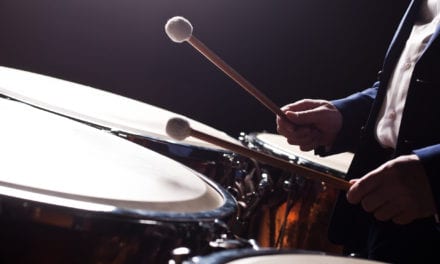By Kirk Moss
A string player’s right hand shares similarities with the voice of a singer. Many string teachers compare the bow to the singer’s breath. Some musicians have even likened the percussive, articulated elements in string playing to consonants and the purer, singing sounds to vowels. Just as a singer vocalizes, a string player needs to “tonalize” or produce sound by a planned design. Yet, when it comes to school orchestras, students and teachers can get so caught up in learning the notes on the page that they neglect the means to produce beauty through the bow. Fundamental right-hand skills, such as finger flexibility – necessary to make an expressive bow direction change or initiate and release an attack stroke – receive minimal attention as students work their way through the techniques of new left-hand finger patterns and key signatures, toward a false raison d’être of shifting to higher positions. My teachers, Robert Culver and Gerald Doan, instilled in me the belief that good sound production serves as a prerequisite to solid intonation. Thus, the technical development of the right hand precedes the development of the left hand, in effect resulting in a sound-driven technique rather than a note-driven technique.
Designing a signature sound requires more than simply playing a warm-up scale, and I advocate a systematic approach to developing right-hand technique through teaching sequences that refine the most important variables of sound: bowing lanes, bow weight, and bow speed. Teach your students to change bowing lanes for added dynamic contrast.
Release bow weight to feel the natural spring of the bow stick, save and spend bow length by varying bow speed, and use different sections of the bow by dividing the bow into thirds. Imagine how refined your students will sound when they vary these variables to produce a more characteristic beautiful tone in their repertoire. In terms of specific exercises, the collé bow stroke was a staple of Ivan Galamian’s pedagogical world. String performers and teachers regard Galamian as one of the greatest violin pedagogues in history. Galamian’s system seemed to work regardless of how much or how little natural talent a student possessed, prompting the former first violinist of the Tokyo Quartet to famously joke that Galamian could make a violinist out of a table. Galamian students would warm up every day with collé. Playing it slowly was more important than fast, and Galamian had students play it in all parts of the bow with every possible bow direction combination: all ups, all downs, then back and forth.
Using collé to develop your students’ right-hand finger flexibility can make a noticeable difference on every bow change and in every attack stroke. By paying more attention to this attack stroke, your students can share in the Galamian lineage of sound-driven technique.
Successful studio teachers emphasize a design for tone production with their students. Many of these teachers use prescriptive pedagogical exercises and routines to convey their ideas. Such exercises offer suitable material to adapt for use in heterogeneous school string classes. Adapting these exercises for the heterogeneous school string class offers orchestra teachers and their students a welcome resource. Remember: Students can do anything; we just have to teach them how. Let’s develop the string player’s right hand and lead students to discover their signature sound.



